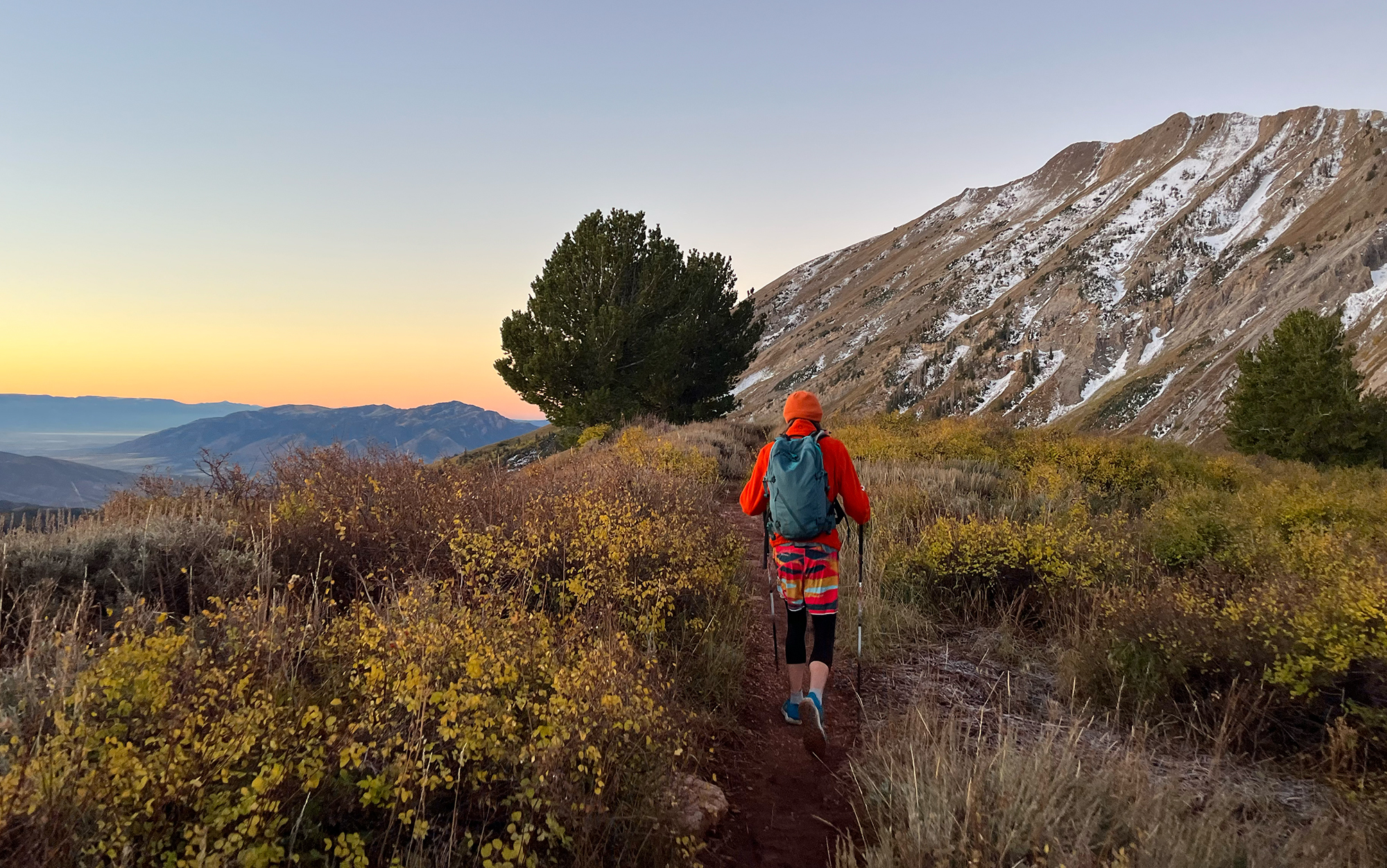Whether you’re planning a pleasant day hike or a big mission, forgetting snacks or bug spray can force you to turn back early. Overpacking can be just as inconvenient once you’re struggling up an incline with too much stuff weighing you down. Refer to this comprehensive hiking checklist to ensure you have everything you need, and nothing you don’t, on your next hike.
Get Started
Apparel
To get the most out of your hike choose moisture wicking clothes and check the weather. Here’s some more information on what to wear hiking and how to efficiently layer.
Read Next: Best Hiking Shoes for Beginners
Backpack
Ashley Thess
You’ll want a comfortable and size appropriate pack to store your stuff. On a short hike, a fanny pack might be all you need. Or opt for one of the best hiking day packs, winter backpacks, backpacking backpacks, or hydration packs.
Permits
Check the trails you plan to be on and secure any necessary permits.
The Essentials
Let’s start with the famous 10 essentials touted by the National Park Service. First developed by The Mountaineers, a non-profit dedicated to getting more people outdoors safely and responsibly, these 10 items prepare you to recreate in the elements, and in case you are lost, injured, or otherwise delayed. I’ll dive into this list and let you know what you might need and why.
Navigation
Some, like senior staff writer Laura Lancaster, still swear by paper maps, but a GPS or smartphone works, too. It’s a good idea to not only have a general idea of where you’re going and what the terrain will be like, but on longer hikes, also know where you might find water or a bail point to cut your hike short.
If you are relying on a GPS or app, make sure your devices are charged and your maps are downloaded in case you lose service. You might consider bringing along a plastic bag to keep your paper map dry, and a compass.
Read Next: OnX Backcountry App Review: The Digital Mapping Tool That Backpackers and Campers Need
Sun Protection
Sunscreen, a sun hat, sun shirt, and sunglasses are all great ways to protect your eyes and skin from UV damage, burns, and skin cancer.
Layers
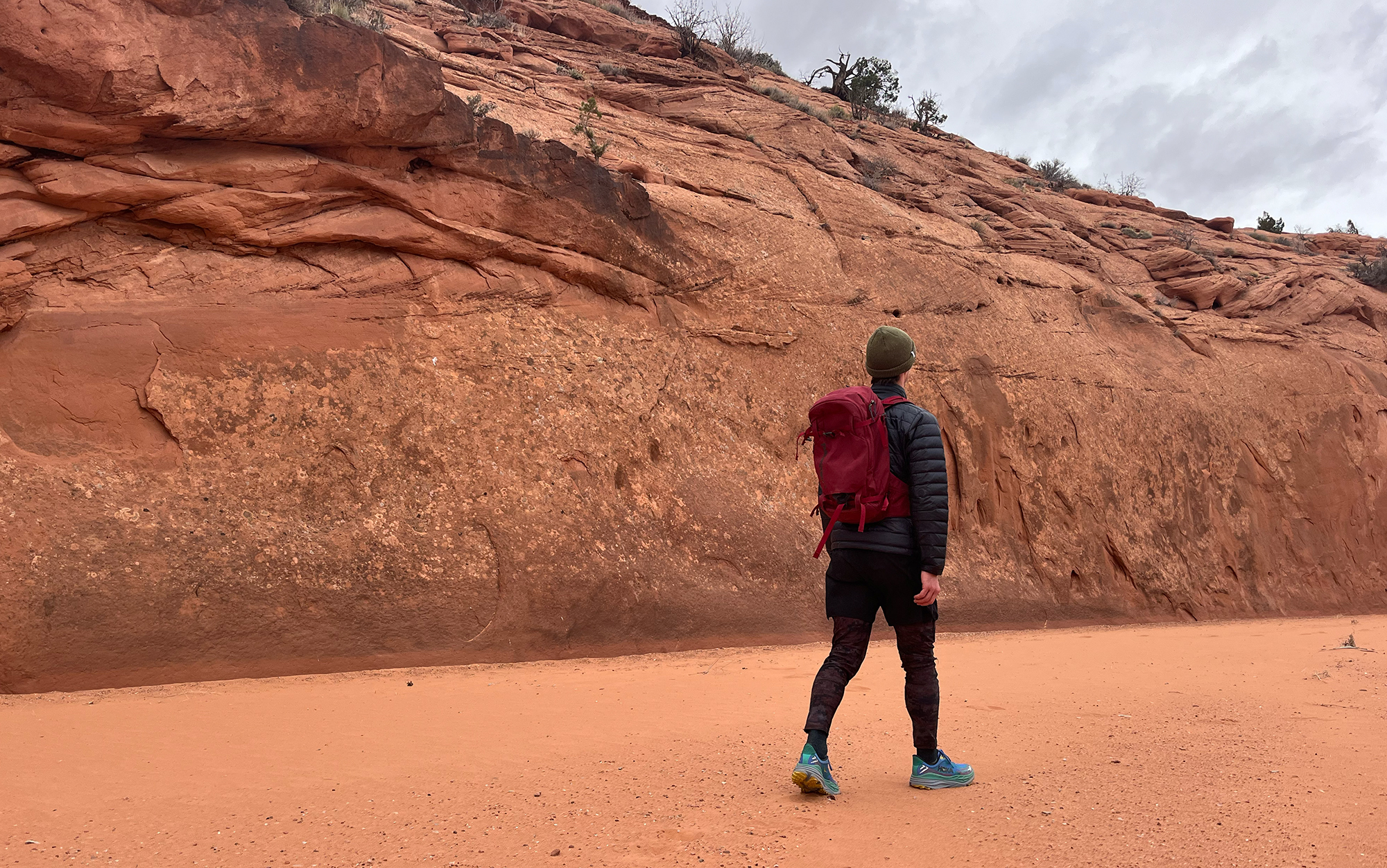
Ashley Thess
Weather can change quickly. A rain jacket, packable down jacket, and a warm hat are all worthy layers for most hikes. If your hike takes longer than expected or an afternoon storm rolls through, the right clothes can keep you dry, warm, and comfortable.
Read Next: Best Hiking Jackets
Water
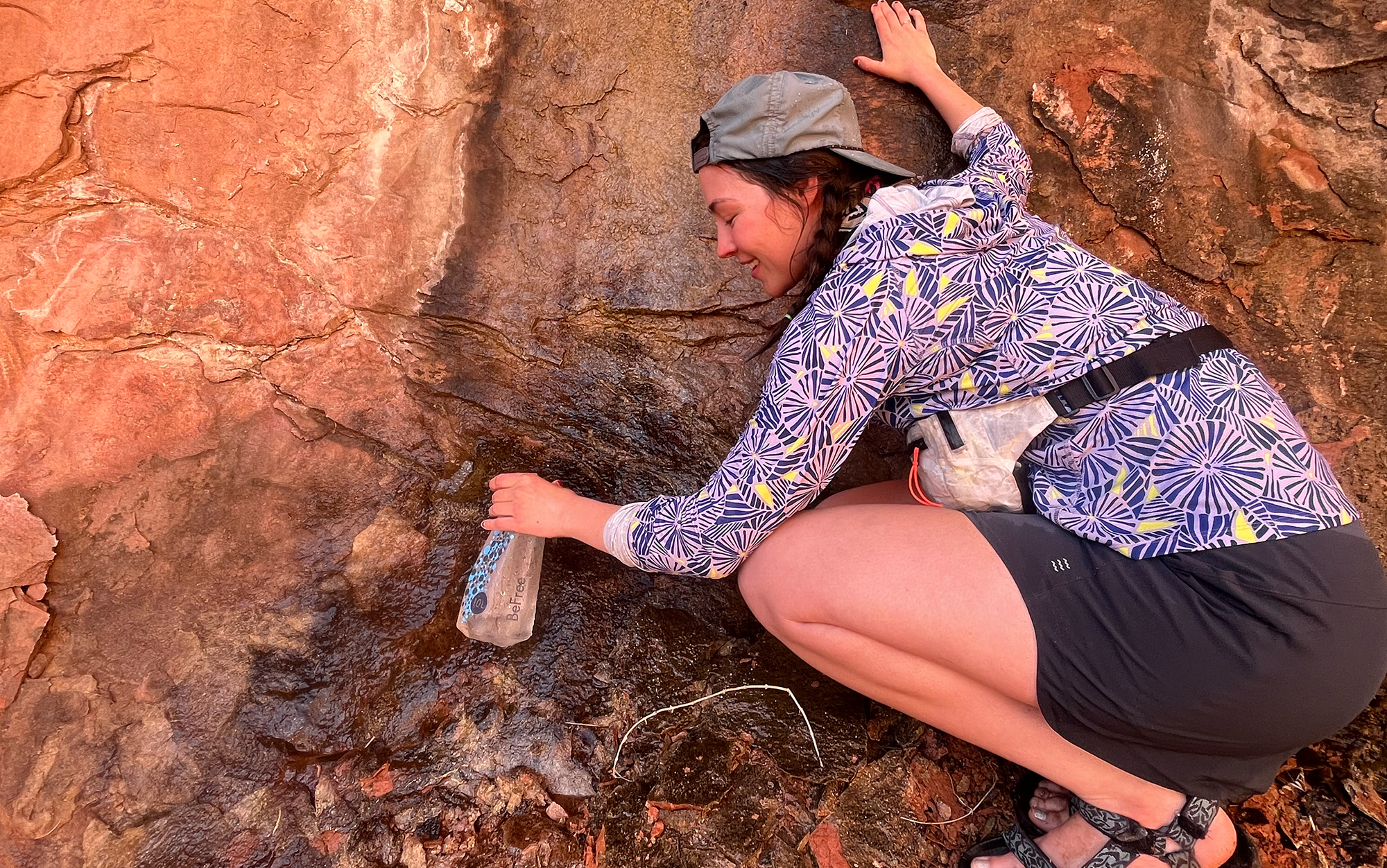
Ashley Thess
It’s recommended that you bring 1 liter of water for every hour of hiking, but this can vary due to heat, humidity, terrain, and your body’s specific needs. If it’s hot outside or your hike is particularly challenging, bring more water than you think you’ll need.
Even on a short excursion, bring a water bottle. Hydration bladders are a convenient way to carry a lot of water for longer hikes. If your hike is near water, pack a water treatment method or water filter in case you need to re-up. A filtered water bottle can feed two birds with one scone.
Read Next: How Long Can You Survive Without Water?
Food
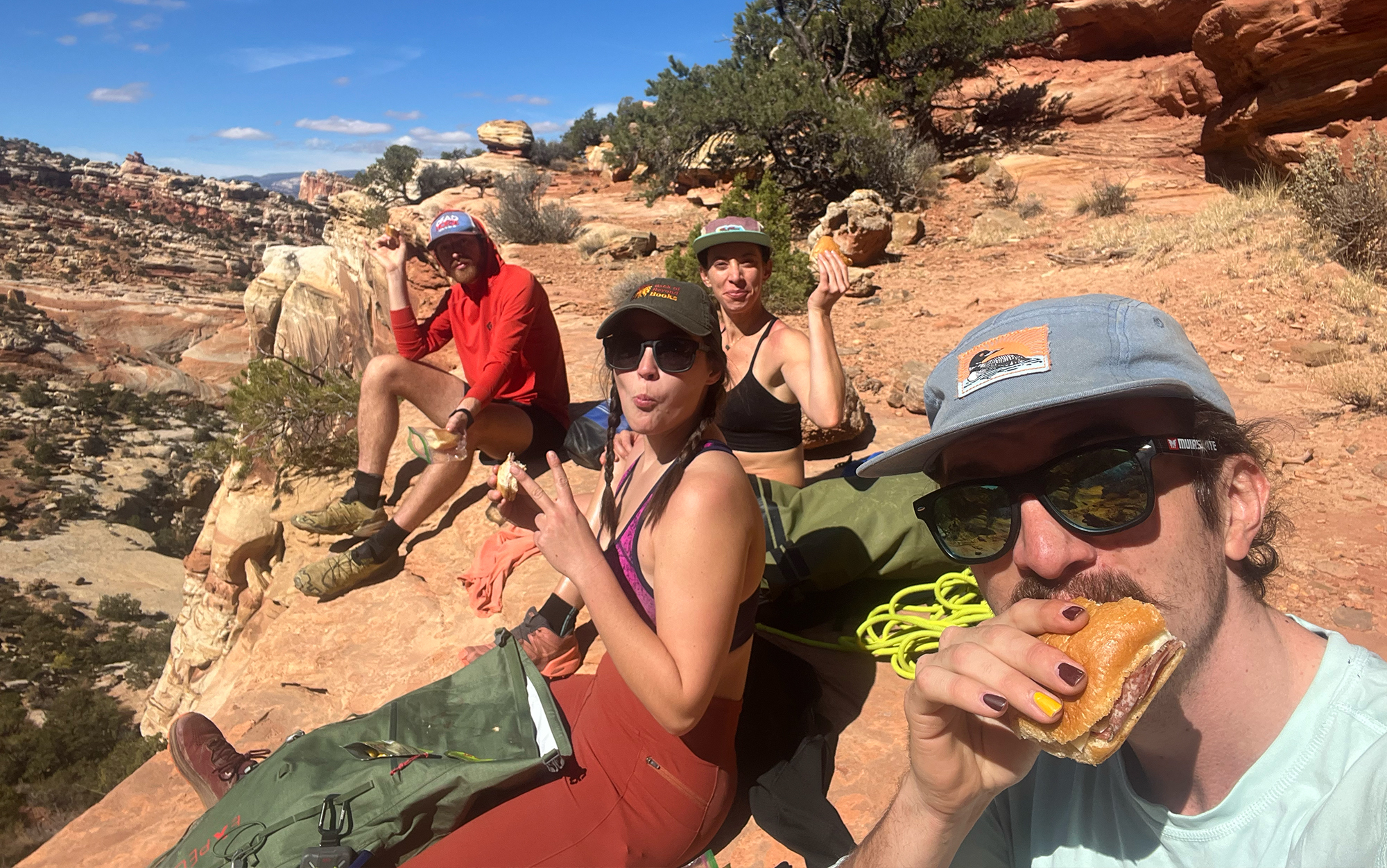
Beau Durrant
Snacks aren’t just a good trail treat; they’re fuel for your body. Pack extra food in case your hike is delayed, or you spend an unexpected night in the woods. Graham Prather, NOLS wilderness medicine education manager, suggests you keep your least favorite granola bar in your hiking backpack. That way you won’t be tempted to eat it unless you get really hungry, ensuring you have something to eat in an emergency.
First-Aid Kit
If someone falls, has an allergic reaction, or develops blisters, you’ll be relieved to have a first-aid kit. Prep your kit for common injuries and know how to use your supplies (without Google).
Read Next: Best First Aid Kits for Hiking
Headlamp
Even if you don’t plan to be out after dark, you should pack a headlamp. You’ll be happy to have hands-free illumination if you’re delayed or exploring a dark space like a slot canyon or cave. A phone flashlight is much weaker, annoying to hold, and more susceptible to unexpectedly dying. An actual flashlight or headlamp is going to be much more useful in an emergency or late hike. Make sure it’s charged, or bring extra batteries.
Fire
Fire is a great survival tool as a way to keep warm, signal rescue, and cook food. This of course depends on your location and fire bans in the area. I keep a packaged fire starter the size of a hard candy and lighter in my first-aid kit for emergencies.
Read Next: Best Ferro Rods
Shelter
An emergency shelter is a bit overkill for day hiking in my opinion. If you’re not confident in your ability to complete a frontcountry hike in the planned amount of time, don’t go.
A bivy is a good thing to have if you’re deep in the backcountry, on a big mission with many variables, or you plan to encounter possible storms. It can protect you in the event you can’t make it back to camp, become injured, or delayed by weather.
Personally, if I had to spend an unplanned night outside on a day hike, I would rely on my extra layers and knowledge of how to build a survival shelter out of natural materials. In the winter time, I carry an emergency blanket in case someone is unable to walk out or gets dangerously cold.
Read Next: Best Survival Gear
Knife
The Mountaineers’ 10 essentials suggest a repair kit and tools. These are important things to have if you’re reliant on your gear to complete your hike. On a frontcountry day hike, you could bring tape, scissors, and a multi-tool for gold star preparedness, but in my opinion you can make do in most situations with a simple knife.
Read Next: Best Camping Knives
Everything Else
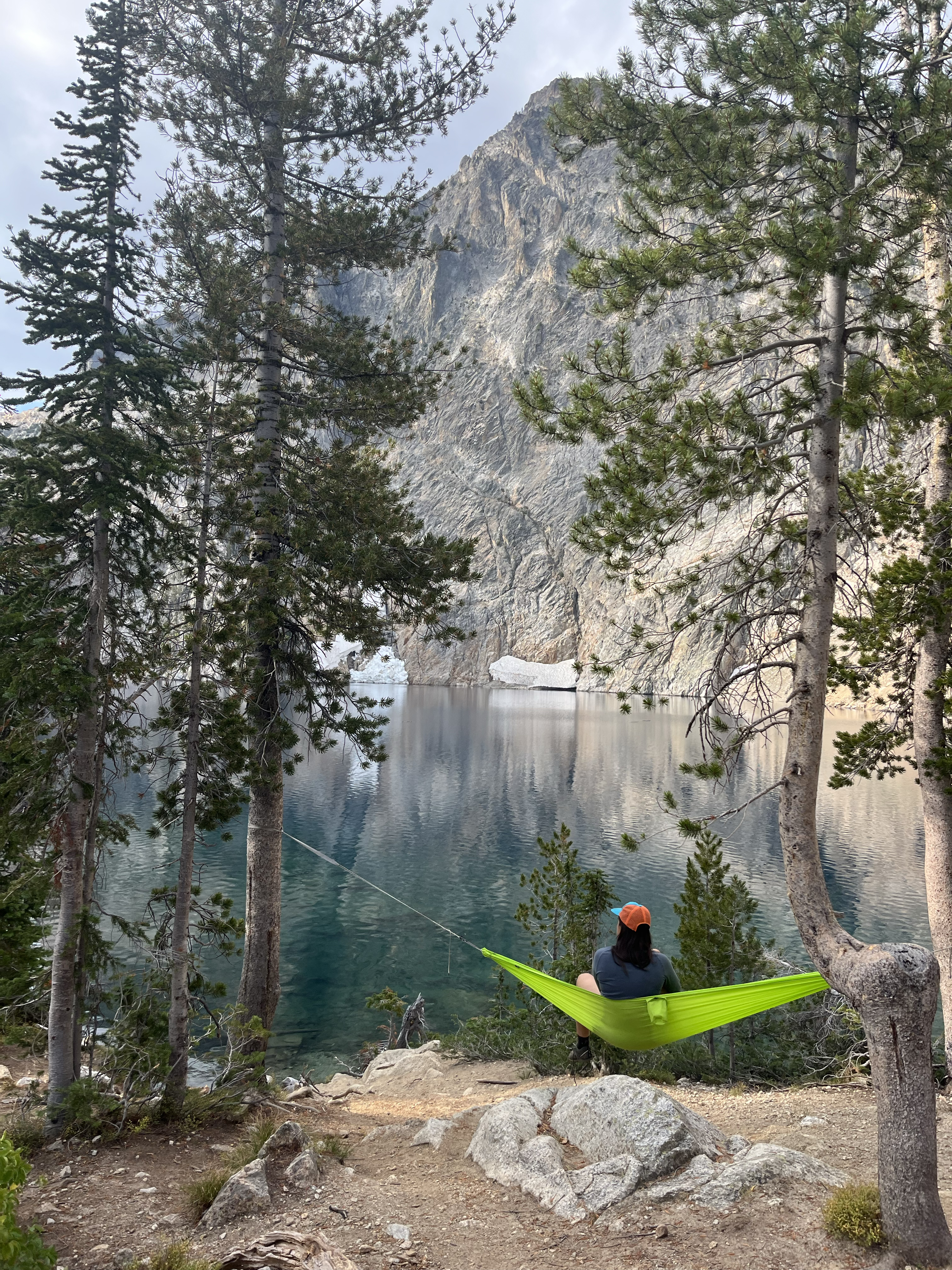
Ashley Thess
The 10 essentials are focused on survival, but you should also enjoy your hike. Here are some extra items that I suggest you pack.
Bug Spray
The importance of bug repellent can’t be overstated. If you’re recreating in a buggy area, especially one with ticks, have a way to escape the insects. Traditional bug spray or lotion is the obvious choice, but if there are large swarms I would recommend a face net as well. If I’m hiking to alpine lakes in the summertime, I have a bug net ready to go. Wear a brimmed hat to keep the mesh out of your face.
Bandana or Buff

Ashley Thess
I’m partial to a bandana to keep blowing sand or debris out of my face and the sun off my neck. It’s also highly versatile, functioning as a towel, headband, string, or marker if you so choose.
Satellite Communicator or PLB
If you’re out of service and hiking alone, attempting to coordinate with others, or want the option to call for help, a satellite communicator is an irreplaceable piece of equipment.
Walkie Talkies
Keep your group in contact, even if you’re out of service or everyone is hiking their own hike. Don’t mistake this as a way to call for help, but two-way radios can be a huge convenience for a group going at different paces or scouting ahead.
Gloves
Whether it’s cold or extremely sunny, hiking gloves protect your exposed hands.
Trekking Poles
Take some of the load off your knees or tackle rough terrain with just one, or two, trekking poles. Poles can also provide some peace of mind in case someone needs assistance walking out after a fall or twisted ankle.
Traction Devices
Consider bringing ice cleats to slip over your hiking boots if your hike goes through snowy or icy terrain. It’ll save you a lot of falling on your ass.
Electrolytes
An electrolyte powdered drink packet or juice to replenish your body while sweating and exercising can keep you outside longer, more comfortably.
Hygiene Items
If you have to answer nature’s call while on trail, be prepared with a trowel, toilet paper, and hand sanitizer. Also check your hiking area’s policies on packing out waste. In desert or river settings, you might need a WAG bag. These are sealable bags containing Waste Alleviating Gel (WAG) to pack out human waste.
Rewards
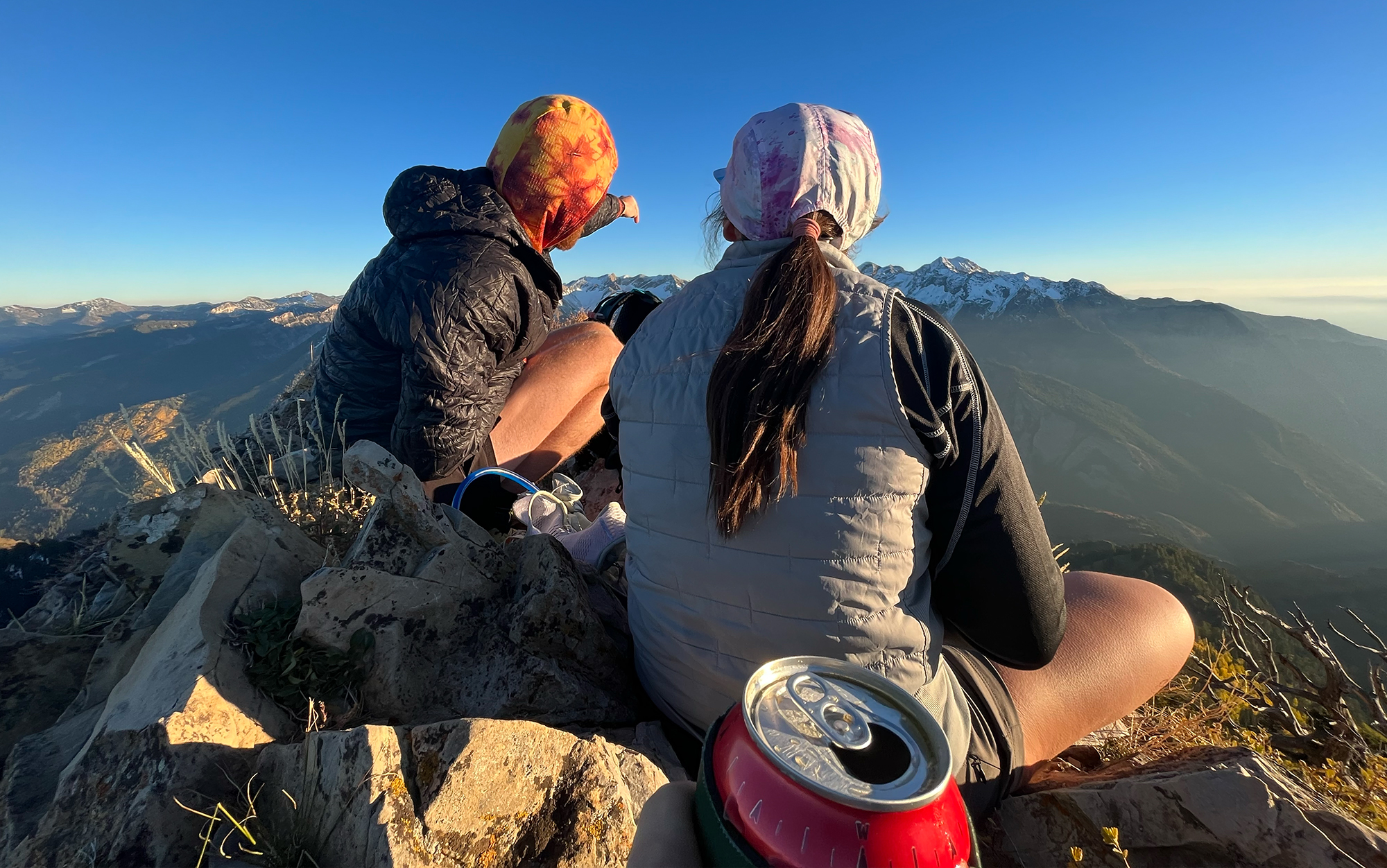
Beau Durrant
If you’re summiting a mountain, completing a big objective, or recreating with reluctant hikers or kids, the mental and physical effects of treats are huge. Whether that’s a summit beer, the best whiskey for the backcountry, candy, or a special snack, these can encourage your group and celebrate a successful hike.
Activities
Some fun items you might enjoy on a casual hike include: a camera, notebook and pen, relevant plant or animal guide, binoculars, art supplies, hammock, chair.
Pet Supplies
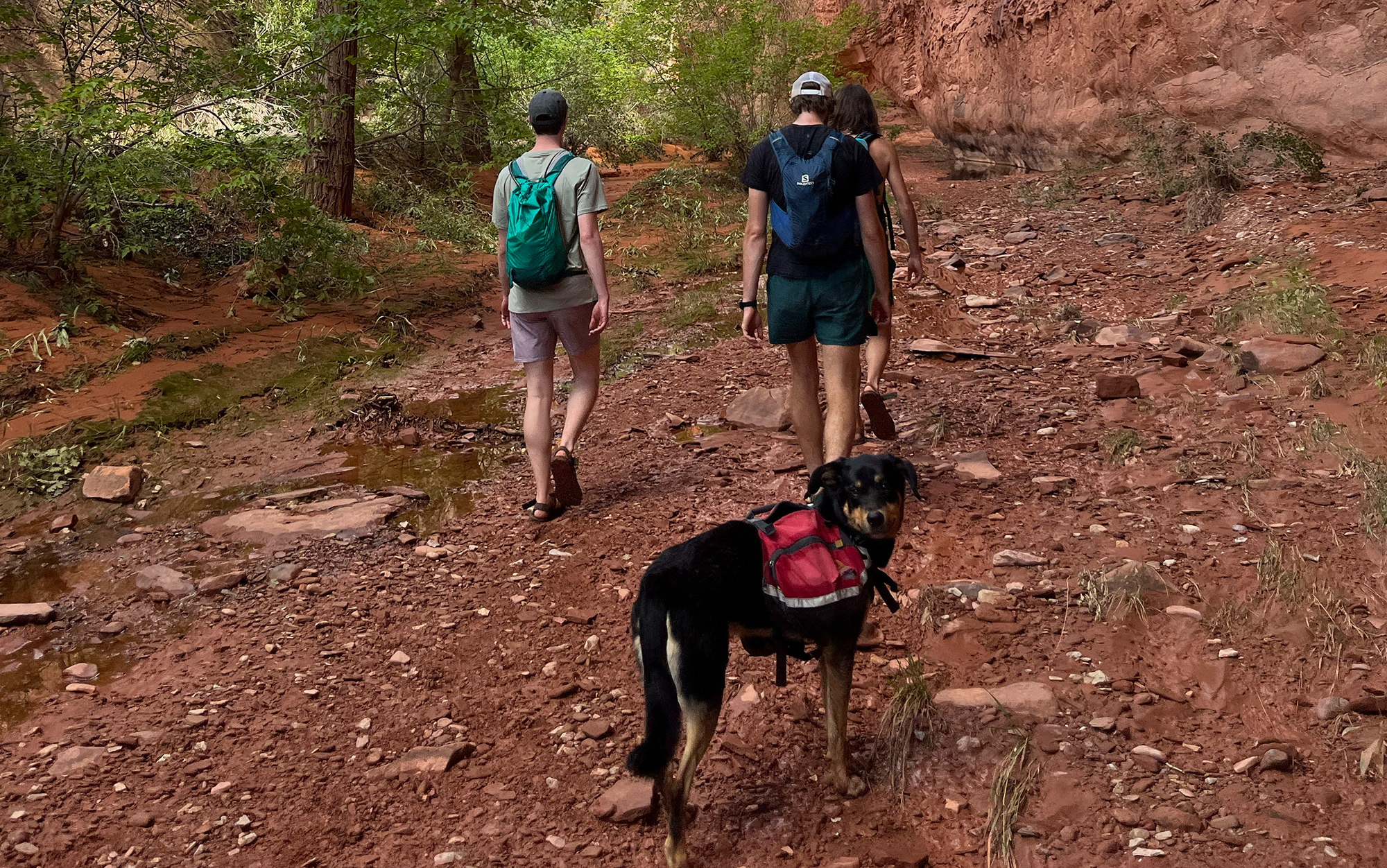
Ashley Thess
If you’re bringing your dog on your next adventure, make sure to pack extra water, a bowl or device for them to drink from, a leash and harness, and dog bags to pack out waste. If the hike is snowy or through particularly rough terrain, this musher’s wax can help protect fragile paw pads.
Read Next: Backpacking Checklist: Don’t Forget These Must-Have Items
Final Thoughts
Now that you have everything you need for any hike you have planned, don’t forget to bring it all home with you. Practice Leave No Trace principles on all your excursions to preserve our trails for all hikers.
Read the full article here

